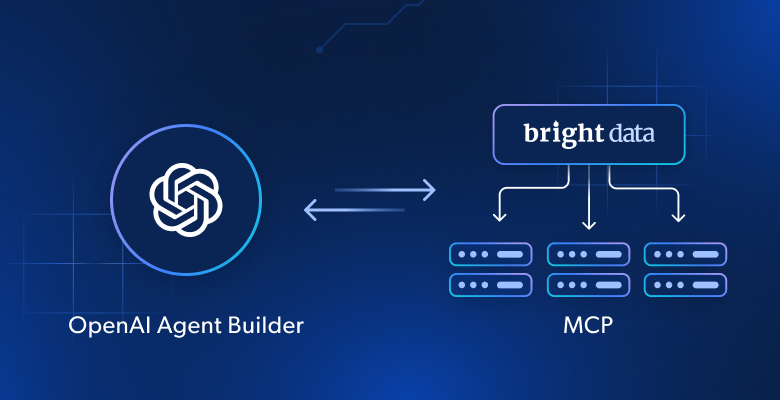IPv4 is a set of rules that governs how devices communicate on a network, including the internet.
Simply put, it allows devices to find each other and exchange data.
IPv4 uses 32-bit addresses. Therefore, it limits the total number of unique addresses to about 4.3 billion. While that may seem like a lot, the growth of the internet has ultimately exhausted IPv4 addresses. But, it’s widely used in the industry alongside its successor – IPv6.
So, let’s take a look at IPv4 and understand it further.
Anatomy of IPv4 Addresses
Structure of IPv4 addresses

Imagine an IPv4 address like a four-part code separated by dots. Each part, called an octet, is an 8-bit number representing a value between 0 and 255 (because 2 raised to the power of 8 = 256).
Explanation of octets and their values:
- Each octet contributes a portion to the overall unique identifier.
- The value in each octet can only range from 0 to 255, written in decimal form (base-10).
Network portion vs. host portion:
An IPv4 address is divided into two sections:
- Network portion (NetID): The initial octets identify the network a device belongs to. Think of it like a neighborhood code.
- Host portion (HostID): The remaining octets specify the specific device within that network. Imagine it as a house number within the neighborhood.
The division between network and host portions is determined by a subnet mask. We’ll explore that next.
Role of Subnet Masks In Address Allocation

A subnet mask defines how many bits in an IPv4 address belong to the network portion and how many belong to the host portion. It acts like a filter, telling us which parts of the address identify the network and which identify the individual device.
For example, a common subnet mask is 255.255.255.0.
Here, each octet in the mask is 255, which in binary translates to all 1s. Since 1s in the mask correspond to the network portion of the address, this mask allocates the first three octets (24 bits) for the network and the last octet (8 bits) for identifying hosts within that network.
By using subnet masks, we can create subnetworks within a larger network, allowing for more efficient allocation of IP addresses within a specific domain.
IPv4 Functioning
IPv4 has several functions apart from unique device identification. Therefore, let’s break down its key functions:
1. Fragmentation
IPv4 includes a fragmentation mechanism, dividing data packets into smaller fragments if their size exceeds network or device limitations. These fragments are reassembled by the recipient to reconstruct the original packet.
2. Service Handling
IPv4 supports various service handling options, including Quality of Service (QoS) and Differentiated Services (DiffServ). These features enable prioritization and grouping of data packets based on application requirements or service types.
3. Routing
IPv4 facilitates the routing process, directing data packets from source to destination through interconnected networks. Routers utilize IP address information to determine the optimal path for packet delivery.
4. Network Address Translation (NAT)
NAT is a technology employed by IPv4 to translate private IP addresses used within local networks into public IP addresses when connecting to the internet. This allows multiple devices within a local network to share a single public IP address, mitigating IP address scarcity issues.
5. Ensuring end-to-end communication across networks
Here’s how IPv4 ensures end-to-end communication:
- Unique Addressing: Each device has a unique IP address that acts as its identification on the network.
- Routing Protocols: Routers use routing protocols to share information about connected networks and optimal paths, creating a vast internet map.
- Packet Forwarding: Routers intelligently forward packets based on the destination IP, ensuring they traverse the network efficiently.
Benefits of using IPv4
IPv4 holds a lot of advantages in the industry. Some of its key benefits are discussed below:
Simplicity and Efficiency
- Faster processing: Smaller header size in IPv4 packets means routers can handle them quicker, leading to smoother data flow.
- Easier network management: Simpler structure makes configuration and troubleshooting of IPv4 networks less complex.
Wide Adoption and Compatibility
- Universal connectivity: Almost all devices and services online use IPv4, ensuring seamless communication and access.
- No compatibility worries: You can connect to any IPv4 network without compatibility issues.
Mature Technology
- Proven reliability: Decades of use have made IPv4 a robust and dependable technology for network infrastructure.
- Established knowledge base: Years of experience have led to well-defined best practices, tools, and expertise readily available for IPv4 use.
Broadcast Functionality
- Efficient network communication: Broadcast messages can be sent to all devices on a network at once, simplifying tasks like network announcements or discovery.
Challenges and Limitations of IPv4
However, it’s important to note that IPv4 has one big limitation for modern-day usage. Some of its key challenges are discussed below:
Address Space Limitation
As discussed initially, IPv4 provides approximately 4.3 billion unique addresses, which seemed enough in the early days of the internet. However, with the rapid growth of internet-connected devices, including smartphones, tablets, and IoT devices, this number is no longer sufficient to accommodate the global demand for unique IP addresses.
This limitation has led to the need for workarounds such as Network Address Translation (NAT). This allows multiple devices on a private network to share a single public IP address. While this seems effective, NAT can complicate certain types of internet communications and does not solve the fundamental issue of address exhaustion.
Security Concerns
IPv4 was designed at a time when internet security was not a primary concern. As a result, it lacks built-in security features, making it vulnerable to various types of attacks, including IP spoofing and Denial of Service (DoS) attacks.
This has led to the development of additional security protocols, such as IPSec, to provide confidentiality, integrity, and authentication at the IP layer. However, these are optional and not inherently integrated into IPv4, leaving potential security gaps.
Routing Inefficiency and Scalability
The IPv4 routing infrastructure can be inefficient due to the way IP addresses and blocks are allocated and routed. As a result, this can lead to larger routing tables, increased processing time by routers, and ultimately, slower internet speeds.
Moving Forward from IPv4
To address these challenges, the internet is gradually transitioning to IPv6, which provides a vastly larger address space (2^128 unique addresses), built-in security features, more efficient routing, improved QoS capabilities, and automatic address configuration.
However, the transition is a slow and ongoing process, requiring significant infrastructure changes and investment.
Therefore, to help improve the transition process from IPv4 to IPv6, many network teams adopt techniques these techniques:
- Dual-Stack Networking: This method involves running both IPv4 and IPv6 simultaneously on a network. Devices can communicate using whichever protocol they support, facilitating a smooth transition.
- Tunneling: This technique encapsulates IPv6 packets within IPv4 packets, allowing them to travel over existing IPv4 infrastructure.
- Translation Mechanisms: These protocols translate between IPv4 and IPv6 addresses, enabling communication between devices using different protocols.
If you’re transitioning to IPv6, consider following one such mechanism to ease the process.
Conclusion
IPv4 laid the foundation for the internet’s growth. It provided unique identifiers for devices, enabling communication across local and global networks. This innovation was crucial for the Internet’s early development.
However, IPv4’s limited address space became a concern as the internet devices grew. The rapid growth of devices and networks outpaced the available addresses. This scarcity necessitated the development of IPv6, a 128-bit system offering a vast number of addresses.
Transitioning to IPv6 is vital to accommodate the ever-growing internet. It ensures every device can have a unique address, fostering further internet expansion and innovation.
If you’re currently working with IPv4, this article highlights the importance of considering the transition to IPv6 to ensure your network’s future-proof functionality.






